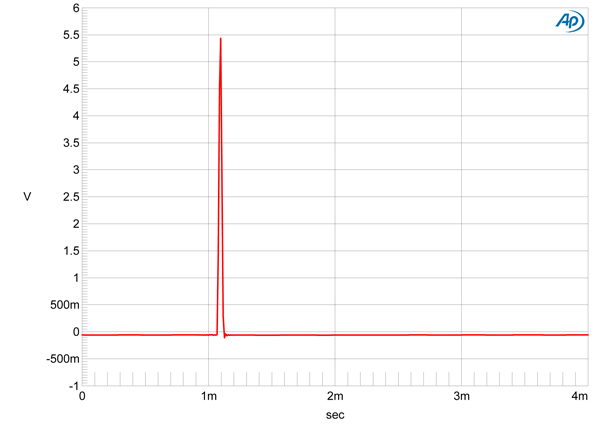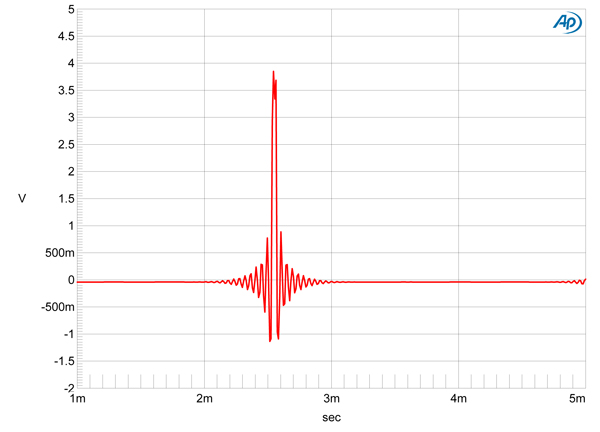Søren, would you mind going in detail about what has been improved with 2541 over 1541? Thanks
Last edited:
Søren, would you mind going in detail about what has been improved with 2541 over 1541? Thanks
There are a number of errors here:
I2S input, there are no standard for that, and its an input needed only if you don't have anything to fight the jitter there per definition always are in the SPDIF inputs. My DACs all reclock and buffer all inputs, removing jitter completely....
Non Over Sampling node is a personal decision. In my opinion it should be avoided as it create additional distortion products, which some likes to color the music.... Anyways if you insist of NOS, then you can load new filters....
The opamps are buffers only, all my DACs are voltage out, no I/V conversion needed.... The buffers are some new high end TI opa1656 cmos opamps, which are very good....
The volume control in my DACs is a perfect digital volume control, that why it's good to have 26-28 bits R-2R networks. No seperate chips, or crappy portmeters or even worse, mechanical relays.
 I'm here to learn always and share that which I've learned so far.
I'm here to learn always and share that which I've learned so far.

I'm a fan of non fatiguing NOS sound but I wouldn't say it is the most correct sound. Just an acquired taste IMO. I think most would actually prefer normal oversampled sound....I have no idea how I ended up here... probably that sajunky again...I'm here to learn always and share that which I've learned so far.
I've figured out a few things about dac's just by reading, trying and ignoring 'common' knowledge. Thats how I ended up with NOS R2R and passive I/V. I'm not an electrical engineer so I leave the input to others. Some of these things are quite complex and the theory can be very dry. However i do understand what you are saying about NOS giving distortion. And I disagree.
OS should be avoided as it creates additional distortion of a kind that does not appear in nature. You are merely trading of one sort for another. Trading fidelity in the x-axis for the y-axis. The distortion that you mention might be odd harmonics but I could only hear them with high pitched, close to 0dB test tones. Not with actual music.
There is no free lunch. The trade-off is introducing temporal distortion, not just 1 direction but both ways. Now post ringing might not be so bad (echo) but pre-ringing is a no-no in my book. It's like a ripple in the water before the stone hits the water. Our brain is not sympathetic to that. Like someone telling you the score before you start watching the match (or the result before the election? then why did you vote).
You can call that a personal decision. I call it cheating nature. It is not for nothing that people choose NOS. I think it's bad to take away the customers choice because of your preselection based on half the facts.
Also the opamps are never just a buffer. Buffering means temporal meddling. If you really claim voltage output from the dac, just use 1 R (and 1 C to remove offset). Keep the signal clean. Not just in amplitude but also in timing.
PS
pictures to show what i mean. Denafrips Terminator /Ares (source: https://www.stereophile.com/content/gramophone-dreams-40-denafrips-terminator-ares-ii-measurements)

NOS Impulse response: clean as a whistle

OS sharp mode impulse response: clear pre- and post ringing
That's why no body uses the red filter (brickwall) for it's preringing, but the black filter (no light) completely eliminates the preringing and the most favorable filter.I have no idea how I ended up here... probably that sajunky again...I'm here to learn always and share that which I've learned so far.
I've figured out a few things about dac's just by reading, trying and ignoring 'common' knowledge. Thats how I ended up with NOS R2R and passive I/V. I'm not an electrical engineer so I leave the input to others. Some of these things are quite complex and the theory can be very dry. However i do understand what you are saying about NOS giving distortion. And I disagree.
OS should be avoided as it creates additional distortion of a kind that does not appear in nature. You are merely trading of one sort for another. Trading fidelity in the x-axis for the y-axis. The distortion that you mention might be odd harmonics but I could only hear them with high pitched, close to 0dB test tones. Not with actual music.
There is no free lunch. The trade-off is introducing temporal distortion, not just 1 direction but both ways. Now post ringing might not be so bad (echo) but pre-ringing is a no-no in my book. It's like a ripple in the water before the stone hits the water. Our brain is not sympathetic to that. Like someone telling you the score before you start watching the match (or the result before the election? then why did you vote).
You can call that a personal decision. I call it cheating nature. It is not for nothing that people choose NOS. I think it's bad to take away the customers choice because of your preselection based on half the facts.
Also the opamps are never just a buffer. Buffering means temporal meddling. If you really claim voltage output from the dac, just use 1 R (and 1 C to remove offset). Keep the signal clean. Not just in amplitude but also in timing.
PS
pictures to show what i mean. Denafrips Terminator /Ares (source: https://www.stereophile.com/content/gramophone-dreams-40-denafrips-terminator-ares-ii-measurements)

NOS Impulse response: clean as a whistle

OS sharp mode impulse response: clear pre- and post ringing
Not exactly. Capacitor is there for filtering HF switching components, not AC coupling. I am sure that Soekris maintains DC path. Opamp is actually in the signal path, I think it also create a balanced output from two ladder networks which are supplied from the single voltage.Also the opamps are never just a buffer. Buffering means temporal meddling. If you really claim voltage output from the dac, just use 1 R (and 1 C to remove offset). Keep the signal clean. Not just in amplitude but also in timing.
Ok, let me elaborate. I was referring to an output capacitor in the signalpath. Not a shorting cap. I don't know the Soekris that well but if it is a short ... not that usefull imo. Not very harmful either. I'll take your word for it. I know what i do is 'bad practice'; taking out the caps, but it really improves the sound. My point is that the opamps do not really help keeping the signal in tact temporally.Not exactly. Capacitor is there for filtering HF switching components, not AC coupling. I am sure that Soekris maintains DC path. Opamp is actually in the signal path, I think it also create a balanced output from two ladder networks which are supplied from the single voltage.
so... catching on on the difference between digital and analog, are we?Since when music consist of single impulse ? Pre or post ringing is of no concern for whole music which is made up of many impulses not just single impulse.
.LOL.Ok, let me elaborate. I was referring to an output capacitor in the signalpath. Not a shorting cap. I don't know the Soekris that well but if it is a short ... not that usefull imo. Not very harmful either. I'll take your word for it. I know what i do is 'bad practice'; taking out the caps, but it really improves the sound. My point is that the opamps do not really help keeping the signal in tact temporally.

Very high praise. I guess Soekris = what D-S should be. While DAC like holo spring/ares/pontus are less detailed, NOS-capable. perhaps more 'analog'.I got my hands on Soekris 2541 right now. My audio chain that I use to test Soekris is like this: Ifi USB conditioner - Soekris 2541 - KGSSHV Carbon - Stax SR007mkII 2.9 (port & spring modded)
First of all, 2541 offers insane amount of detail and resolution and other dacs in the same price range are not even close to offer what Soekris 2541 does. Spring II? Pontus? No, Soekris 2541 sounds definitely more detailed. Some may call it too "clinical" or too natural. However, personally I prefer natural, colorless presentation over euphoric, "fun" presentation. I'm struck with how good the separation is with 2541. It's out of this world, this is a "level up" for me, from now on I have to build new expectations on how ideal separation should be. This is something that I never thought it's possible. Detail, resolution, transient behavior of 2541 is on par with the best DS dacs I've heard including Matrix Element X. It sounds a bit bright compared to Pontus but that can be the case due to Soekris delivering a bit more detail at treble range than Pontus.
My experience with DS dacs wasn't the most pleasant one. I always had the impression that they either make everything sound too harsh or too polished. (hard to put out my experience with words, so I had to use vague terms like "polished") Soundstage was small and mostly 2 dimensional with only a little bit of depth. Sibilance control was often poor, if the digital source is asking for it, the presentation was getting polluted with a lot of sibilance artifacts. Soekris 2541 solved all these issues for me without sacrificing detail & resolution and fastness of DS dacs and actually bringing the level a bit higher. It makes everything sound so effortless, so light and so liquid. Unbelievably good, totally recommended.
Yip. Natural - only NOS. Clinical - I expect Soekris, still more natural than DS DACs.Very high praise. I guess Soekris = what D-S should be. While DAC like holo spring/ares/pontus are less detailed, NOS-capable. perhaps more 'analog'.
Ok but you are from Denmark. How do we know if you are @soekris brotherI got my hands on Soekris 2541 right now. My audio chain that I use to test Soekris is like this: Ifi USB conditioner - Soekris 2541 - KGSSHV Carbon - Stax SR007mkII 2.9 (port & spring modded)
First of all, 2541 offers insane amount of detail and resolution and other dacs in the same price range are not even close to offer what Soekris 2541 does. Spring II? Pontus? No, Soekris 2541 sounds definitely more detailed. Some may call it too "clinical" or too natural. However, personally I prefer natural, colorless presentation over euphoric, "fun" presentation. I'm struck with how good the separation is with 2541. It's out of this world, this is a "level up" for me, from now on I have to build new expectations on how ideal separation should be. This is something that I never thought it's possible. Detail, resolution, transient behavior of 2541 is on par with the best DS dacs I've heard including Matrix Element X. It sounds a bit bright compared to Pontus but that can be the case due to Soekris delivering a bit more detail at treble range than Pontus.
My experience with DS dacs wasn't the most pleasant one. I always had the impression that they either make everything sound too harsh or too polished. (hard to put out my experience with words, so I had to use vague terms like "polished") Soundstage was small and mostly 2 dimensional with only a little bit of depth. Sibilance control was often poor, if the digital source is asking for it, the presentation was getting polluted with a lot of sibilance artifacts. Soekris 2541 solved all these issues for me without sacrificing detail & resolution and fastness of DS dacs and actually bringing the level a bit higher. It makes everything sound so effortless, so light and so liquid. Unbelievably good, totally recommended.

